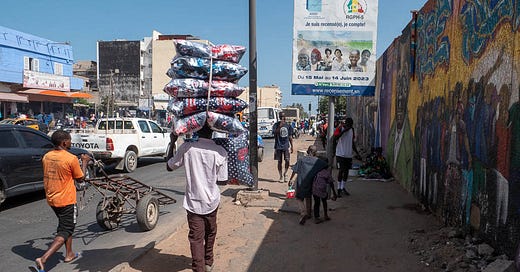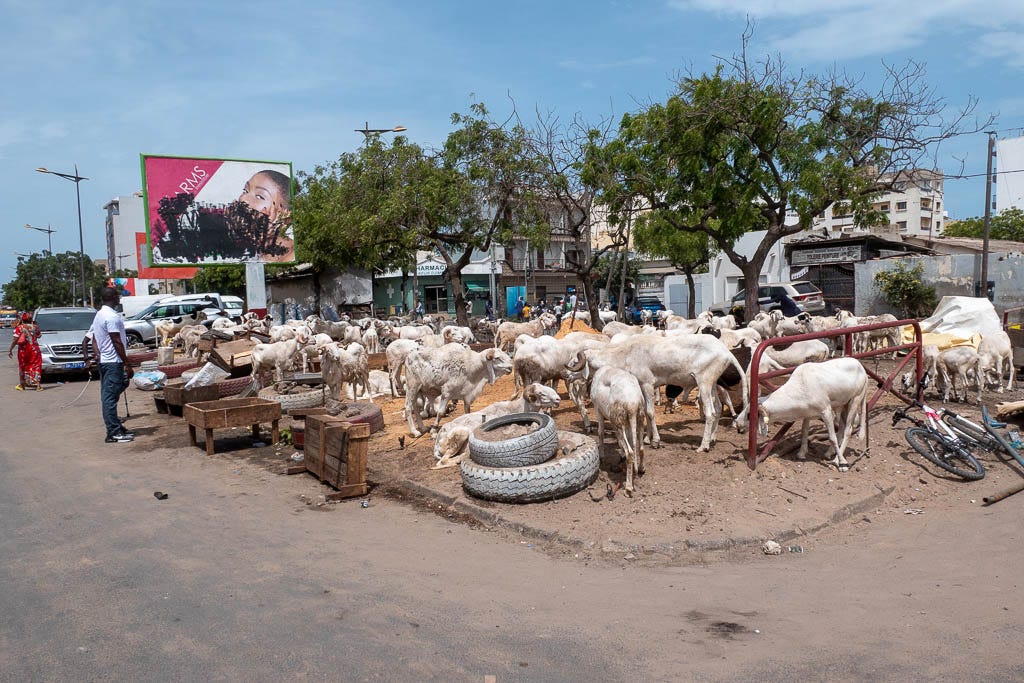I struggle to find a cover photo that captures Dakar, that encapsulates how crowded, chaotic, yet oddly functional it is. Partly that’s because I’ve taken very few pictures along my walks, for a variety of ethical reasons. The streets are, relative to the wealthier world, both figuratively and literally peoples’ homes, and taking pictures of someone “inside” their home without permission is gross and rude.
So the pictures I have show Dakar at its least crowded, in the transitional zones, from one market to another. And almost every space in Dakar is a market, of one form or another. Every street is an open-air mall with hawkers hawking everything, including sometimes pet hawks. You can buy anything and everything almost anywhere, making walking in Dakar like being in one of those old-time cartoons where the background keeps repeating and with a soundtrack that’s the collective buzz of things being pitched at you, in French and Wolof — rides on buses, egg and meat sandwiches, bug poison, board games, scales, goats, shoes, tailoring, nail-jobs, shaves, engine parts, books, Nescafe, loans, varieties of sothiou (chew sticks), sunglasses, ginger, and so on.
The line between official and unofficial store is blurred with even the most upscale parts of towns having sidewalks crowded with stuff being sold. There is the official bank inside the door, past the guards, and just in front of it, there are also twenty entrepreneurial bankers. Old-school financial startups, offering off the book transactions, should you want to go that way.
Outside the air-conditioned mall, where ex-pats and the wealthy shop, is the dusty, straight, dirt road where everyone else shops. Its median a patchwork of goat pens and auto shops, and its two sides thick with stalls and wood and tin homes, although which is which is unclear, and sometimes they are both stalls and homes.
Life in Dakar is lived in the public, with privacy a luxury of the few, and most of public life is lived on the streets. Literally. Cars don’t own the roads like they do in the rest of the world, pedestrians do. The boundary between sidewalk and road is fuzzy, with each spilling into the other.
It makes walking in Dakar surprisingly safe, given how little basic infrastructure there is. You’re not going to be clocked by a bus going 70 mph, because the buses can’t reach that speed. Not with traffic dense with carts, horses, taxis, handcarts, bikes, and pedestrians1.





